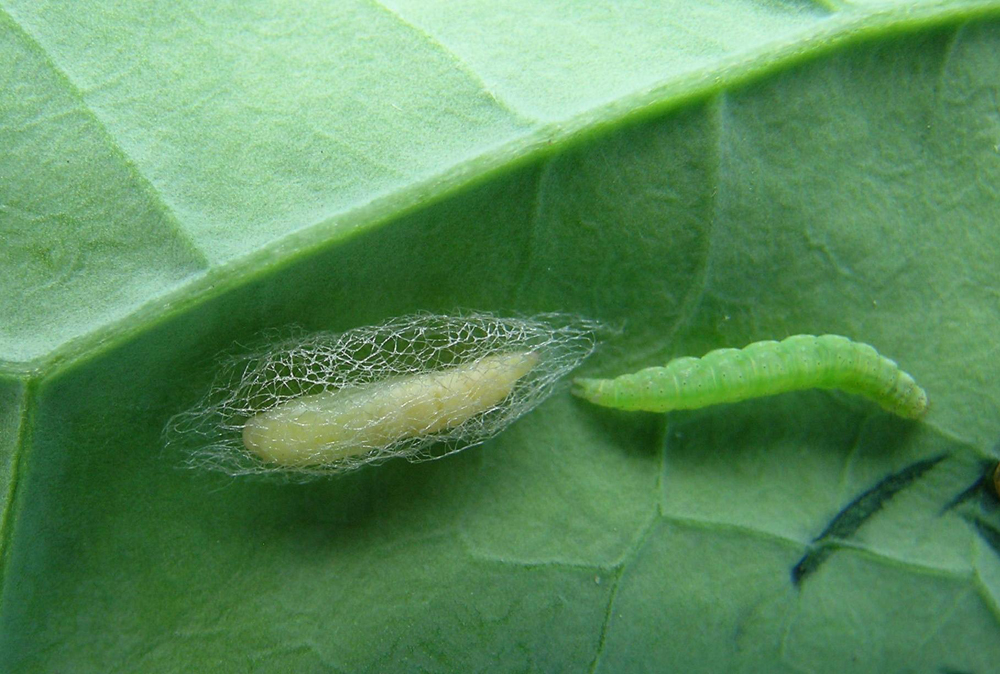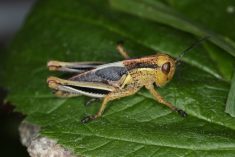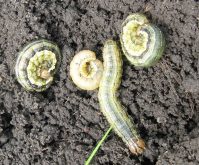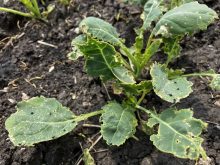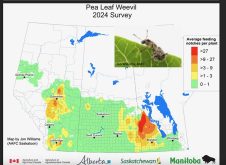Canola growers in eastern Manitoba and the southern Interlake should be keeping an extra eye out for diamondback moth this year, experts have warned.
Manitoba Agriculture and Resource Development has noted exponentially higher counts of diamondback moth in those areas, something provincial entomologist John Gavloski has linked to windy weather in June blowing adult moths into the region.
“Especially that eastern region, they were getting some quite high numbers,” Gavloski said.
Why it matters: High winds out of the south earlier this year may have left an unwelcome legacy: diamondback moth.
The province counted 400 moths near Lac du Bonnet as of July 2, the highest of any region in Manitoba, while traps in the rest of eastern Manitoba have reported anywhere from 189 adults in Beausejour to 372 in Whitemouth.
Traps in the Interlake fell only slightly below those numbers. The Gunton area saw the bottom of that range, with 106 adult moths this year, compared to 241 trapped in Warren.
Only one trap in The Pas rivalled numbers seen in the east and Interlake, counting 123 moths this season, far lower than the 30 to 50 adults registered elsewhere in the northwest.

In comparison, traps in the southwest topped out at 15 moths near Hamiota, while central Manitoba range from 12 in Winkler to 57 farther north at Gladstone.
Those numbers do not, however, automatically mean that producers will have to spray for the pest, Gavloksi cautioned.
“The trap counts are kind of an early warning system,” he said. “We put up the traps to try and pick up what is blowing in and give people a heads-up to get them out scouting. We don’t want them making control recommendations or thinking there’s going to be an outbreak because of what the trap counts are saying.”
Poor egg-laying conditions or high populations of parasitoid insects can sometimes chip away at larvae numbers, even if a large wave of adults has been noted in an area, he said.
Read Also

Manitoba sclerotinia picture mixed for 2025
Variations in weather and crop development in this year’s Manitoba canola fields make blanket sclerotinia outlooks hard to pin down
The same southerly winds that blew moths into the province during the first three weeks of June may have also hindered egg laying, according to Gavloski.
Meteorologists have said the period between mid-May and mid-June this year was the windiest in Manitoba since 1990, the Manitoba Co-operator recently reported. The province saw sustained winds over several weeks during that time, with several days clocking gusts over 70 kilometres an hour. Peak gusts in some areas were significantly higher, including 114-kilometre-an-hour winds by Eriksdale and 120-kilometre-an-hour winds near Somerset.
The east, however, saw peak gusts at about half that strength, ranging from 51 to 67 kilometres an hour.
“We did have a lot of very windy conditions, which would have brought them in, but they’re going to lay more eggs on warm, calm, dry evenings, so if it’s too cool or too windy, it will decrease their activity,” Gavloski said. “There were a lot of windy evenings, but there were probably enough calm ones too that I think it’s good for people to be out looking.”

One of the field pests that does not overwinter well in Manitoba, diamondback moth problems usually have little to do with populations the year before. Manitoba Agriculture and Resource Development links diamondback moth problems with the number of overwintered moths farther south, winds out of the south needed to bring the pests into Manitoba each year, and warm summer temperatures.
Gavloski says he has not yet heard of any producers having to spray for diamondback moth, although larvae are starting to show up and producers have had to seek control measures for other pests, such as grasshoppers or army worm, in some crops this year.






